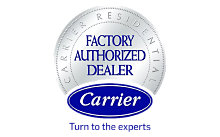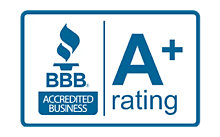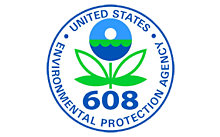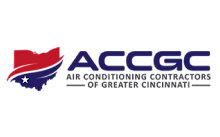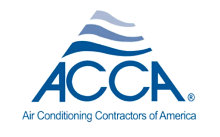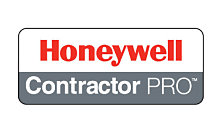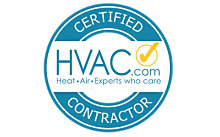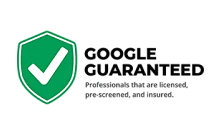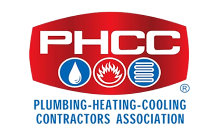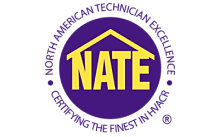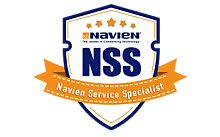Cincinnati UV Air Purifier Installation
Pollution isn’t an issue that is limited to the outdoors – polluted air exists within the home, and concentrations of pollutants are likely much higher than you’d expect. In an average Cincinnati area home, the indoor air contains concentrations of pollutants two to five times more than what is found in outdoor air. Many elements of a household play roles in this environmental problem – today’s energy efficiency trends targeting energy conservation keep energy in while eliminating a home’s natural ventilation that normally allows contaminants to exit, household pets produce pet dander and shed fur while also tracking in particles from the outdoors, and the products and materials found and used inside release harmful volatile organic chemicals into the home.
Many Cincinnati residents spend a considerable portion of the day indoors, which means they are exposed to indoor air pollution nearly around the clock. Lengthy exposure to poor air quality makes people more prone to the negative ways pollutants affect health and comfort. It’s important to be aware of indoor air quality issues and take action to improve conditions within the home, for the benefit of everyone indoors – air purification is a common strategy used to improve home air quality.
An ultraviolet air purifier is an indoor air quality system made for use in conjunction with the home heating and cooling system. This variety of air purifiers makes use of ultraviolet light as a means of disrupting the viability of pathogens commonly found within the indoor atmosphere, including viruses, bacteria, mold, and more. UV C light works effectively inside the duct system or HVAC equipment, where there is no danger of UV C exposure. The use of a UV air purifier in your home minimizes pollutants in the air supply and prevents them from causing a variety of side effects.
Thomas & Galbraith Heating, Cooling & Plumbing offer ultraviolet air purifiers for use in homes throughout the Greater Cincinnati area. Our air quality experts evaluate contaminant issues in the home to suggest effective solutions to lower indoor air pollution.
Get more information regarding the use of UV C purifiers and learn how they are used in homes and other critical environments. Our team works to find the right solutions to deliver clean air across every sq. ft. of your home.
Contact us today to request a consultation with our indoor air quality team.
How an Ultraviolet Air Purifier Operates
When Cincinnati homeowners consider air purification, filters that capture particles and pull contaminants from the air are typically what come to mind. Media air cleaners use filters as just described, and the filter is used to trap particles as air passes through that filter – filtration is the method of contaminant removal. The type of filter used varies by equipment type and model – some use HEPA filters while others have media filters with MERV values typically at 10 or higher.
The filtration method for air purification extracts contaminants via the filter media which prevents the particles from circulating back into the home environment. The trapped particles remain trapped in the filter until finally there is no more space and the filter is no longer effective, then they are disposed of when filters are changed.
Air purification using an ultraviolet air purifier is a different process. A UV lamp releases UV-C light to cleanse the air supply of pathogens in circulation. UV light energy exposure causes cellular damage in the DNA of viruses, bacteria, mold, and other particulates floating around the air in a home. Damage inflicted by the UV-C energy disrupts DNA in order to prevent the pathogen from harming individuals upon exposure or reproduction. Neutralized contaminant particles don’t cause illness or allergies, or multiple and spread throughout the home environment.
Ultraviolet C light is a wavelength that is shorter than UV A and UV B. It is unable to break through the Earth’s ozone layer. Since ultraviolet C light doesn’t enter the atmosphere, we’re shielded from the Sun’s UV-C light. Research has found that ultraviolet C light energy has the power to eliminate flu virus particles that are airborne without harming human tissue.
Installing a UV lamp inside the ductwork of the home’s HVAC system is an option used to control the life and spread of biological contaminants that pollute the home’s air supply, essentially disinfecting air as it cycles through the HVAC ducts and equipment. Many of today’s ultraviolet air purifier solutions are also able to disinfect areas prone to moisture, as the unit is oriented to emit UV-C light onto the surface. These purifiers typically do not use pre-filter or filter methods to trap and remove contaminants.
Benefits of UV Air Purifiers
Using UV lamp purifiers benefits a household in numerous ways. Several of the main reasons homeowners choose to install this air purification solution include:
- A purifier that uses UV-C light may help household members remain in good health during cool and flu season. The ultraviolet light destroys virus particles that enter circulation via sneezes, coughs, and more, ending their spread and transmission among your family.
- UV lights control contaminants to alleviate indoor allergy symptoms. The allergen has been destroyed in such a way that it is no longer able to cause sensitivity upon contact.
- UV lamp air purifiers offer air purification while consuming much less electricity than filters and other air-cleaning devices. Air filtration methods hinge on the HVAC blower which pushes air through the system filter, plus some units have individual fans that operate continuously. An ultraviolet purifier demands little power to operate throughout the year.
- A UV air purifier is very simple to maintain. You need to change the light bulb at regular intervals, often once each year or every few years depending on the bulb.
Friendly Service. Certified Technicians. Happy Clients.
Our Guarantees
No Guesswork
When we say "This is how much it is" that's how much it is. Period.
"It Will Work"
No excuses or stories, just service when you need it!
100% Money-Back Satisfaction
We'll make it right or remove the system and return 100% of your money.
Client Respect
If we dirty it, we'll clean it. If we damage it, we'll fix it. Plain and simple.
Safe and Secure
The right company and the right people in your home, ensuring your job is done right and your peace of mind is protected.
Improve Indoor Air Quality. Calls Are Answered 24/7/365
Installing Ultraviolet C Light Air Purifiers
Ultraviolet light air purifiers are positioned inside the home’s HVAC system. Put into the return ductwork, UV C light sanitizes air circulating through the heating and air conditioning system.
Many UV air purifier designs exist for purchase. You can find options designed to operate along with the HVAC system’s blower motor or run continuously – it’s safe to leave them in operation all the time, even overnight. UV C bulbs need little power to run and have a lifespan between one and three years.
A UV lamp is also a treatment option for evaporator coils that are prone to mold growth. The damp and warm environment within the coil chamber often struggles with mold, which hinders system performance and affects air quality. The UV air purifier provides constant, dedicated treatment to protect the coils.
Is an Ultraviolet Air Purifier Safe for Use?
Ultraviolet light purifiers are considered to be safe for the treatment of air quality issues inside the home. The air purifier utilizes short-wave UV C light to disrupt the DNA of airborne pathogens to effectively neutralize them. They are developed to prevent accidental exposure to UV light and ozone generation.
Minor exposure to UV-C light should not cause harm. HVAC professionals install ultraviolet lamps to emit energy upwards to avoid any accidental exposure to those down below.
UV air purifier devices used inside home heating and cooling units do not produce increased amounts of ozone. Many homeowners are concerned about this issue, as some electronic home air cleaners do carry this risk – particularly an air purifier with an ionizer. An ionizing air purifier can release ozone through its electric discharge process. Ozone is bad for the environment and the health impacts of exposure can be really serious.
Award Winning & Industry-Leading
Who Is MAX?
Max is an important part of our team. He is more than just a cartoon character. Max represents our commitment to quality work, craftsmanship, pride, and our passion to serve our clients and community. We celebrate this mentality through Max because these are the values that drive us to be the area’s most complete and comprehensive home service company. So, now when you see Max, you’ll know the story behind the man with the mustache!


